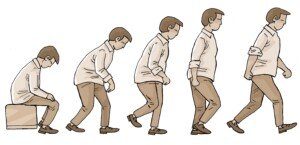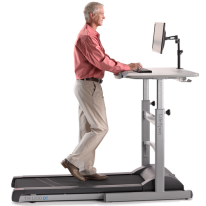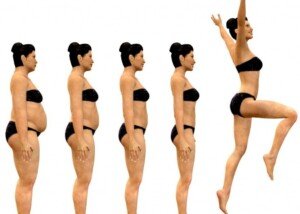
It’s time to see how a treadmill desk stacks up to the traditional 10,000 steps a day pedometer plan to offset prolonged sitting.
The “sitting disease” is the catalyst behind using treadmill desks, but those who’ve used pedometers to get in 10,000 steps a day may still have spent too much time sitting.
This is because 10,000 steps a day can easily be accumulated with the help of one exercise session plus one other chunk of time in the day in which there’s lots of brisk walking such as while shopping.
Then the rest of the time may have been spent mostly sitting.
10,000 Steps a Day vs. Treadmill Desk
I’m a former personal trainer who has researched the sitting disease; I’ve also been using a treadmill desk since 2011.
Research on the sitting disease is relatively new, and thus, there have not been any studies conducted (at least not that I know of) comparing the 10,000 steps a day pedometer approach with the treadmill desk approach.
So which is better for avoiding the sitting disease?
10,000 Steps a Day Pedometer Method Cons
• Discourages movement that elevates heart rate, since tallying of steps is the focus.
• Creates false sense of fitness gains since 10,000 is a big number for total steps.
• Does not have a built-in incline feature.
10,000 Steps a Day Pros
• The pedometer eliminates having to keep track, other than periodically checking the little device on your hip.
• The pedometer can record marching in place during times that you can’t ambulate from point A to point B, such as when waiting in line or being in an elevator.
• Can motivate you to upgrade your fitness plan such as taking step aerobics classes or jogging outdoors.
Treadmill Desk Cons
• Not all employers will allow these machines into the workplace, so you’re screwed if that’s the case.
• Walking while using a computer can detract from concentration, depending on the type of computer activity.
Treadmill Desk Pros
• Seriously cuts down on sitting time when using a home computer (and when watching TV if the TV is within visual range of the machine).
• Will significantly limit sitting time at the workplace when the machine is permitted, and if the user is committed.
• You can use an incline.
• If you have a desk occupation, you can amass 10,000 steps a day faster on a treadmill desk than by merely counting steps.
Walking just one hour on a treadmill desk at 1.7 mph while doing computer work will get you more than halfway to your 10,000 steps goal: a total of approximately 5,500 steps.

Brilliant Solution to the Treadmill Desk vs. 10,000 Steps Pedometer Plan
• Use both a pedometer AND a treadmill desk!
• But don’t get lax on one approach just because you’re using the other.
• At various speeds on the treadmill, count how many steps you take in exactly 60 seconds, then multiply by 60 to get the hourly tally. Each step is one step (not two footsteps counting as one).
• This way you’ll know how long and at what speed you need to walk to achieve about 5,000 steps.
• So if you’re in the habit of reading celebrity gossip or breaking news online, one hour at 2 mph could go pretty fast—all 5,940 steps (based on my own calculation, but yours shouldn’t be that much different unless you’re very tall or very short).
You don’t need a pedometer to avoid the sitting disease. I don’t use one yet can easily get in 10,000 steps a day just with the treadmill desk (depending on computer workload).
There are other days in which I’ve hit only 5- or 6,000 steps on the treadmill desk, but certainly, my total steps by bedtime are in excess of 10,000 due to non-treadmill-desk movement.
The bottom line is just to avoid sitting as much as possible.
 Lorra Garrick is a former personal trainer certified through the American Council on Exercise. At Bally Total Fitness she trained women and men of all ages for fat loss, muscle building, fitness and improved health.
Lorra Garrick is a former personal trainer certified through the American Council on Exercise. At Bally Total Fitness she trained women and men of all ages for fat loss, muscle building, fitness and improved health.
.


























